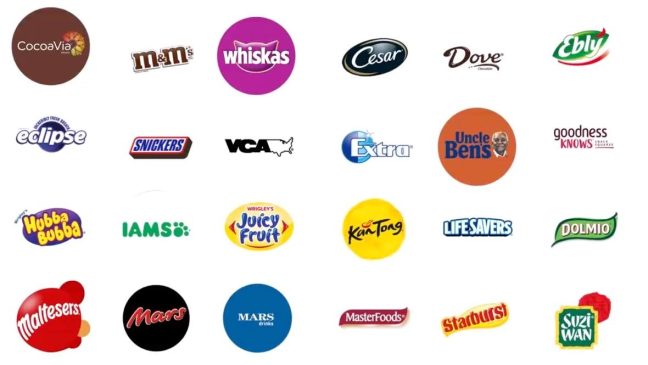Mars Wrigley is “consumer obsessed,” according to Mike Gilroy, VP of trade development and sponsorship. The company is “all about the consumer and delivering value and quality to the consumer.”
Gilroy said if the 100-plus-year-old company is going to continue to be successful, it needs to “continue to listen to what the consumer is telling us, as the consumer continues to evolve.”
Gilroy talked with The Griffin Report of the Northeast’s Maggie Kaeppel during the recent Sweets & Snacks Expo at McCormick Place in Chicago. He said the company has the resources to understand what consumers are doing, including the differences in generations.

“We’re all looking for different things. There are some similarities, but they’re certainly looking for different things,” he said. Secondly, Mars Wrigley believes “the world that we want tomorrow starts with how we do business today.”
As an associate, Gilroy said that belief is “incredibly empowering” and allows him to “do the right things within the construct of what I control, to grow toward the purpose that we have.” From a sustainability perspective, the company is focused on a healthy planet and nourishing people to enhance their well-being and ability to thrive. The company’s goal is to be at zero net greenhouse gas emissions by 2050.
In addition to the quality of its products, Mars Wrigley is taking on the responsibility of caring for the environment. “The people that we work with, the supply chains that we work with, to make sure that they’re there for the next 100 years.”
Third, Gilroy said the company is “very centered in terms of inspiring moments of everyday happiness,” and trying to create a world where everybody feels that they belong.
Tailwind categories
Looking at categories experiencing strong growth, Gilroy said gummies are at the forefront, growing 13.7 percent over the course of the past year.
“We’ve been in gummies for decades, through our Lifesavers, however the gummies subcategory has been on fire.” He said this may be due in part to Gen Z, which is very “experiential, in terms of they want taste, they want format, they want texture and they want something new – whether that’s spicy or sweet. All of that is incredibly important to them, all leading to that 13.7 percent growth rate, as noted by NCA.”
The second tailwind category is gum, which grew 13.8 percent over the course of the last year. While the category took a hit during the COVID-19 pandemic, it has come back strong, according to Gilroy. The NCA is suggesting that gum will grow by about a billion dollars by 2026.
The third category is ice cream, which also is “growing by leaps and bounds.” He said the category is expected to grow from about $74 billion today to more than $105 billion by 2029.
He said Mars Wrigley has a strong, innovative ice cream portfolio, led by the Snickers Ice Cream Bar, along with M&M Ice Cream Sandwiches and the KIND non-dairy treat. “All three of those are No. 1 in their respective spaces” in convenience stores.
In terms of innovation, Gilroy said the company has a three-fold approach: products, seasons and moments and insights.
From a product perspective, he said they are focusing on M&M’s Caramel Cold Brew. Coffee house drinks are popular with Millennials and Gen Z, he said, so Mars Wrigley has taken its M&M’s Caramel and combined it with the cold brew coffee flavor.

Another innovation is Twix Cookie Dough, which features a traditional Twix cookie covered in a cookie-dough flavored layer with chocolate cookie pieces and enrobed with chocolate.
Gilroy cited these as examples of what the confectionary industry is all about – trying new and unique things but also touching on nostalgia.
In addressing seasons and moments, he said the company is moving beyond the traditional holidays and seasons and getting into some “micro-moments,” such as summer and supporting cause-based platforms.
From an insights perspective, Gilroy noted the growth of the digital or e-commerce space due to the pandemic. Mars Wrigley now has a digital team “well positioned to talk about the digital journey but also how digital supports the in-store purchase or the in-store journey, as well.”
“It’s not just about buying online and picking up in store, having it delivered; it’s about also researching and going into stores, or what sells with what products well as a basket builder.”
Understanding the consumer also is a factor. This goes back to learning about the various generations and their approaches, but also what’s going on in-store.
“We have, essentially, an internal consultancy, which is our transaction zone team…they spend all their time focusing on what the future of front end is, what future of the aisle is, what the future of shopping is, as it relates, in particular, to snacks and treats.”
The team’s work focuses a lot on self-checkout, as “confectionary is incredibly impulsive,” Gilroy said. “How do we make sure that we have the right mix of products? How do we have the right merchandising apparatus?
“How do we continue to capitalize on the impulsive nature of confectionery and snacks and treats that we know people are looking for, even if it’s not on their shopping list?”
Turning to changes in the aisles, he said a trend during the pandemic was the purchase of larger pack sizes. Some of that has continued.
The transaction zone team is working to support retailers to provide them necessary tools and insights.
While toilet paper is the highest household penetration category, confectionary comes in second. “We’re upwards of 98 percent penetration, which tells you that everybody snacks at various events or various times, and so it’s in everybody’s basket.”

